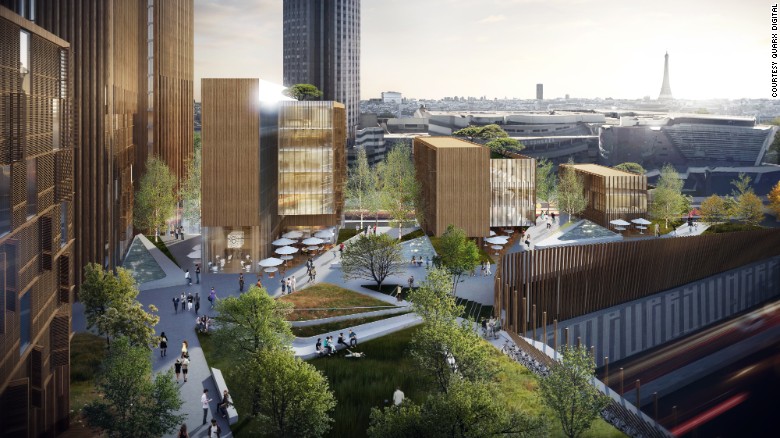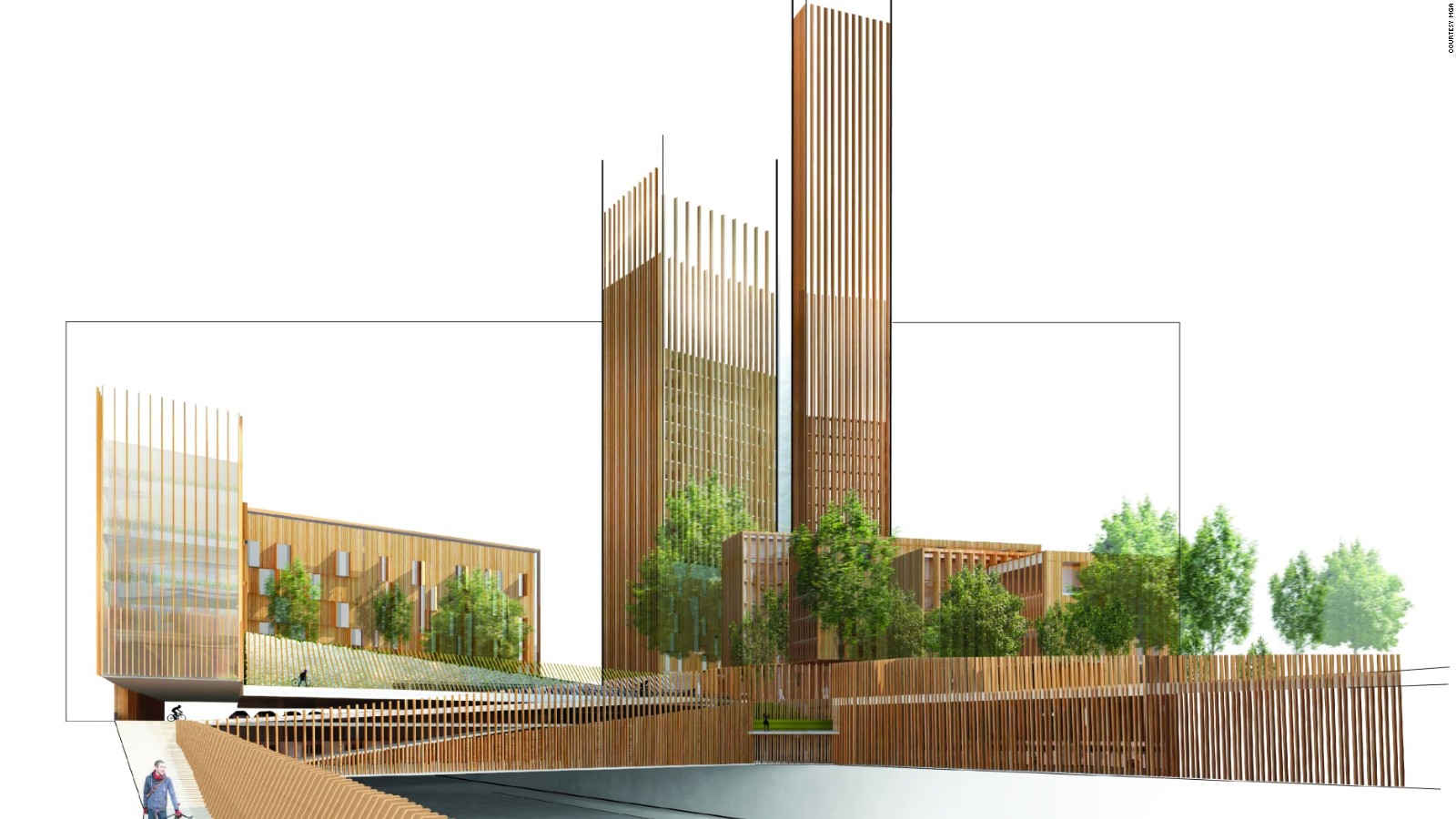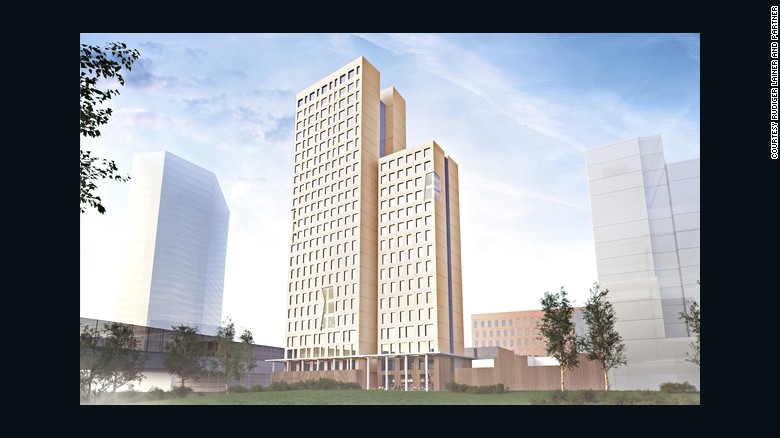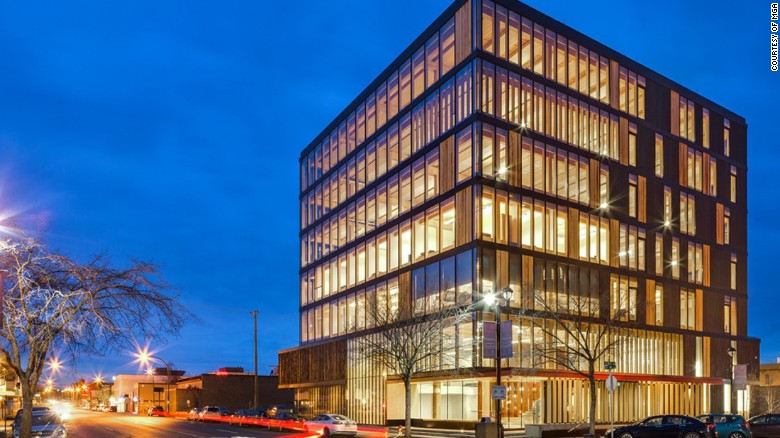Architects design 'world's tallest' wooden skyscraper

Forget
steel and concrete. The new material of choice for skyscrapers could be
wood if Canadian architect Michael Green has his way.
Green's Vancouver-based MGA firm along with French architectural partners DVVD and real estate group REI France recently proposed what they claim would be the tallest wooden building in the world for Reinventer Paris, a design competition which sought new ideas for revitalizing architecture in the city.
At
35-storeys tall, the tower at the center of the "Baobab" complex --
which also includes a student hotel, green space, bus station and e-car
hub -- aims to help solve the French capital's housing challenges in a
sustainable, creative and environmentally-friendly manner.
Some within the project have even compared the concept to the Eiffel Tower in the iconic structures stakes.
According
to Green, the Eiffel Tower had a huge impact in inspiring architects to
build with steel when it debuted as the world's tallest structure in
1889. Now he hopes Baobab can do the same.
"Eiffel's
vision redefined the skylines of the world, eventually (starting) the
race for height in places like New York and Chicago in the 1920's and
30's and even... (in) new global cities in Asia and the Middle East
today," Green told CNN via email.
"We
love the idea that a wood tower in Paris, however modest in some
respects ... will help champion a new global wave of building with more
sustainable, renewable and beautiful materials," he added.
Rise of the plyscraper?
The
idea of a "plyscraper" may sound far fetched to those unfamiliar with
the concept and there are currently no plans to construct the MGA
building in Paris.
But tall wooden
buildings are an architectural development being given increasingly
serious consideration in a number of locations around the world.
Work is set to begin on the HoHo building,
a 275-foot structure made almost entirely from wood in the Austrian
capital of Vienna next year. Meanwhile, a 34-storey wooden apartment
block could be built in Stockholm by 2023 if architecture firm C.F Moller has its way.
MGA has already built the 97-foot tall Wood Innovation and Design Center in Prince George, Northern British Columbia. Other ambitious wood buildings have also sprung up in the likes of Australia and the United Kingdom too.
 |
| Architects C.F. Møller have designed a 34-story, wood-framed residential tower for the center of Stockholm. It could be built by 2023. |
The advantages of wood include its dexterity as a building material as well as its strong environmental credentials.
Cross
laminated timber -- a multiple panel wood product that is used to form
the likes of walls, roof and floor panels -- in particular is has
quickly established itself as a strong, reliable and popular wooden
building material.
"Wood, unlike steel
and concrete, sequesters carbon dioxide, storing it away for the life
of the building it is in," Green said. "As a renewable material grown by
the power of the sun, wood offers us a new way to think about our
future."
Promotional literature
relating to Baobab states it would store an estimated 3,700 metric tons
of carbon dioxide. That's equivalent to keeping 2,207 cars off the road
for a year or operating a home for 982 years, MGA state.
The
tower would also be constructed using a prefabricated construction
method, where components are measured and built in a factory, often with
space for doors, windows and wiring already carved into panels, before
being rapidly transported and put together on site.
This could potentially reduce cost, disruption and build time.
Could you, wood you?
On
the downside, however, critics say the drawbacks of large wooden
structures include the potential for increased fire hazard and the fact
that economies of scale are not quite there yet to make it massively
cheaper than the likes of steel and concrete.
Reports earlier this year
suggested the Vienna fire department was liaising with the
architectural firm behind the HoHo building to figure out how to
minimize the blaze risk.
Green confirms
building such ambitious structures with timber would mean "reinventing
wood; making it stronger, more fire safe, more durable and selecting
material from sustainably managed forests."
This
last point is particularly relevant if wood is to fulfill its promise
as a sustainable material. An efficient supply chain that replenished
wood at a similar rate to which it was used would be a basic
requirement.
 |
| The "Baobab" complex as designed by MGA in conjunction with its design partners in France. |
Then
there are the difficulties of introducing new materials and designs
into a model for building that's already relatively efficient and
cost-effective.
Leading timber specialist at the engineering group ARUP, Andrew Lawrence, told CNN earlier this year
that shear walls -- the central core of tall buildings -- are likely to
continue to be made from concrete and steel for the foreseeable future.
Dollar-for-dollar as a pure construction material, he said, wood can still struggle to be cheaper than concrete.
Green
pointed out that all MGA wooden buildings so far have been built with
"central elevator cores in mass timber." Although he added that the
foundations have been made in concrete and steel has been used to make
connections between the wood.
However, Lawrence also pointed out that building with wood can still have its benefits if carefully planned out.
"What you need to do if you want an economic wood solution is to think about all the aspects from outset," Lawrence says.
"You
will save on the program because it's all dry and is quick to erect and
potentially, if you're making an office building, you can leave a lot
of the wood exposed, saving on the cost and time of installing
finishes."
"If you leave the wood exposed, you can (also) have a really nice environment inside the building," he says.
As
Green and MGA suggest, there would better no location to put wood's
aesthetic and structural fortitude to the test than the picturesque city
of Paris.
Courtesy: CNN





